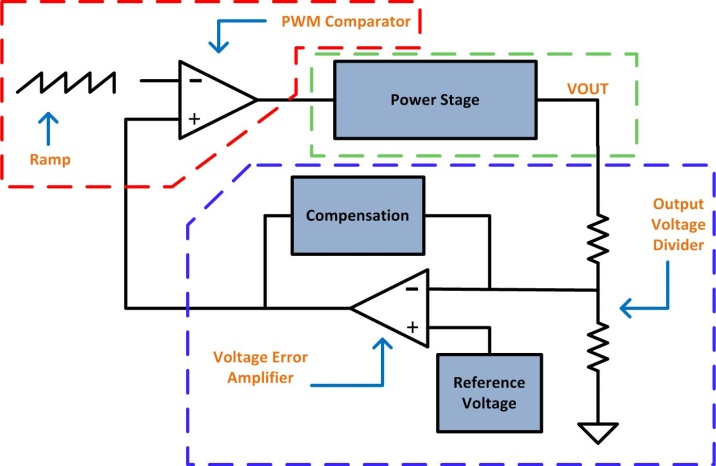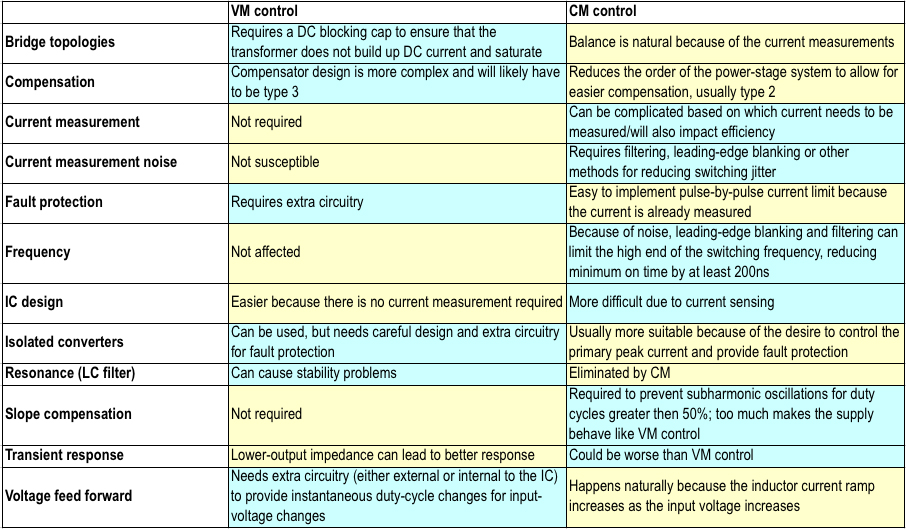SSZTC38 october 2015
There are two types of fixed-frequency pulse-width modulation (PWM) control: voltage mode (VM) and current mode (CM). Figure 1 shows a diagram that explains both control types. This simple block diagram is very useful in understanding the different parts of the loop.
 Figure 1 Block Diagram of a
Fixed-frequency PWM-controlled Power Supply
Figure 1 Block Diagram of a
Fixed-frequency PWM-controlled Power SupplyOne of the major differences between VM and CM is the ramp that inputs to the PWM comparator. In VM, this ramp is a sawtooth waveform generated inside the PWM controller. In CM, the ramp is generated proportionally to a measured current. This small difference in how the PWM signal is generated leads to major differences in the behavior of the control loop.
Consider a simple nonisolated buck converter. When using VM, the power stage will have a double-pole response related to the inductor value and output capacitor. When using the same power stage but implementing CM control, the response becomes a single pole related to the output capacitor and load resistance. This means that for VM and CM, you need different types of compensation.
Remember that CM control uses a ramp proportional to an actual current, so you must have some way to measure that current. Measuring the current and getting a clean signal is the most challenging part of CM control. The main issue is switching noise that the current-sense signal picks up. You can combat this noise problem in a number of ways. Leading-edge blanking basically ignores the first 50-100ns of the current-sense signal. This is effective, but causes issues with minimum on time and fault protection. Using a RC resistor and capacitor network to filter the signal is also an option, but you will again have issues with fault protection. So even though compensation is easier for CM control, it is not always the best choice.
How do you choose the method that might be right for you? Table 1 shows some trade-offs between the two methods.

|
Power Design Services has completed a number of TI Designs reference designs in both VM and CM:
- VM control – PMP8962, PMP9559, PMP11140.
- CM control – PMP9727, PMP10288, PMP10979, PMP10852, PMP10871, PMP9581_REVB.
The choice between CM and VM control is not always easy or obvious, hopefully the topics discussed here will help you to make the right choice for your system.
Additional Resources
- For more information about CM vs. VM, see my Power Tips post on EETimes.
- Watch the Power Tips video series.
- Read more Power Tips blogs.